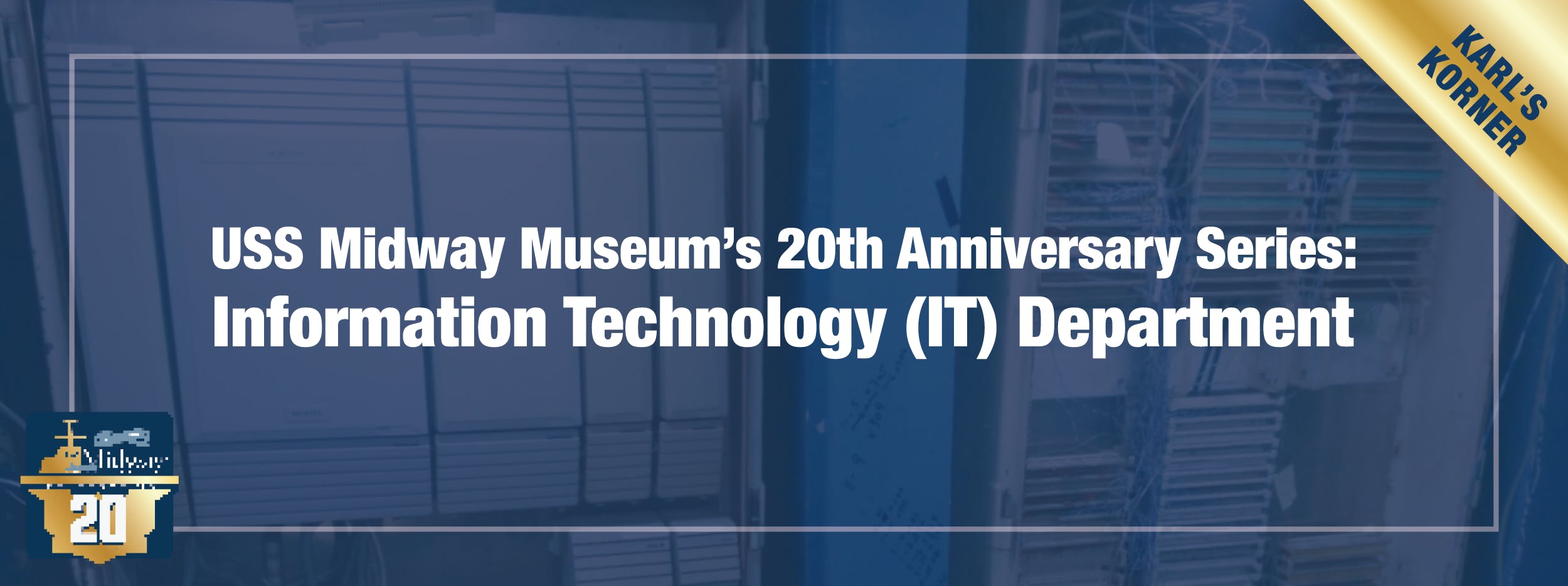 November 30, 2024 | Karl’s Korner
November 30, 2024 | Karl’s KornerUSS Midway Museum's 20th Anniversary Series: Information Technology (IT) Department
Alone among all the departments within the USS Midway Museum, the Information Technology (IT) department is arguably the one most affected by future trends.

The always-evolving nature of information management technology and ever-emerging threats to corporate data require a willingness to keep pace with commercial technology developments and a constant vigilance to protect systems and information from malevolent entities. To date, all of this has largely been attained, with IT being a key reason for the ongoing success of the museum and all its missions.
More amazing still, from the IT perspective, this all began from scratch in 2004 when Midway arrived pierside as an empty shell. While miles of wire and cable were strung throughout the ship, none of it was useful from a computing perspective. The ship’s technology systems were decades out of date and were rendered non-functional as part of the decommissioning process. Therefore, a physical network system had to be purchased and installed within a modest start-up budget.
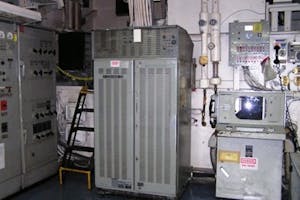
As a public attraction, merely having desktop computers linked together was insufficient—a modern point-of-purchase system was required for the museum’s ticket booth, café, and gift shop. Furthermore, the explosion of purchasing remotely on smartphones, which became popular not long after Midway opened, compounded this issue. The IT department’s founder, Jesus Gastelum, had to labor under various structural, financial, and time constraints to set up a functioning network system that was always responsive.
The priority was to find a location to install racks for primary patch panels, routers, and switches. Since transmission cabling only has a three-hundred-foot limit to move data, spaces forward of Aircraft Elevator Three on the Hangar Deck were selected to support the Administrative office located below the fantail, and a handful of outlying offices elsewhere. Because of the cable length limitations and the sprawling nature of Midway, several intermediate distribution frames, consisting of more racks with panels, routers, and switches, had to be sited at out-of-the-way locations. This also meant that entirely new cabling had to be installed.
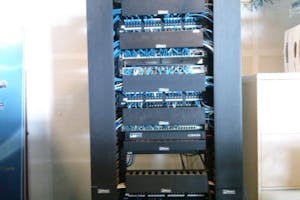
At first, economical servers of modest data capacity were employed, but within a couple of years, this equipment needed to be substantively upgraded. However, as Midway’s operations expanded, particularly with a modern education program arising, the museum’s business history became extensive, and the demands of more sophisticated communications systems required more storage capacity and speed of delivery.
An additional burden for the IT department was running a modern telephone system. Again, the original equipment aboard the ship was rendered non-functional and was hopelessly obsolescent. So new racks and switch panels needed to be installed to permit not only one hundred different stations on the ship for internal communication but also voice and computer communication off-ship. In parallel with the computer upgrades, the phone system needed an entirely new cabling system to be overlayed onto the dead bundles that were now artifacts from the ship’s past. Later, an entirely new telephone system was installed that tied into the ship’s computer network.
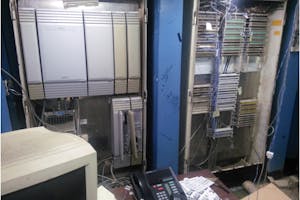
Similarly, for both convenience and safety, the wireless systems were looked at, but the heavy steel structure of Midway made a wholesale adoption of wireless technology impractical. As technologies improved, new ways were found to include wireless systems in portions of the ship. Additionally, communication upgrades like radio relay nodes made handheld radio communications everywhere across the restored areas of the ship possible.
One thorny problem that challenged Midway’s second IT manager, Joe Gursky, was compatibility for both the hardware and program systems across the offices on the ship. As a cost saver, individual desktop systems were replaced as they wore out, and the latest Windows operating systems were installed piecemeal. Such a process worked well when the computer population was modest, but as staffing and other computer equipment expanded, this approach would not suffice. So, by 2013, a push to standardize Midway’s network meant adapting to new technologies to keep pace with the evolving attraction industry.
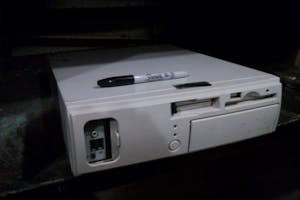
This also required sufficient upgrades to the backend hardware as newer servers and additional equipment racks, not to mention additional cabling, including fiber optics, took root. One problem unique to Midway’s environment was the improvised nature of the sites for both the primary and intermediate data frames. Expediency forced the location of most equipment in rooms exposed to warm ambient temperatures and marine air. As portions of the ship were restored or modified, it was now possible to relocate most of the data frame gear to more controlled environments both amidships and, appropriately, within Midway’s old computer station below the ship’s Combat Information Center. These new spaces are environmentally controlled and have much more secure access.

The work continues with Shawn Granen, the current IT director. Heading into our third decade as a top tourist attraction, Midway will face new challenges related to information technology, but these are opportunities for growth in ways that could never have been imagined on opening day 20 years ago.
Your Adventure Starts Now
Your email is the key to information that will open up all your possibilities for exploring the mighty Midway!

